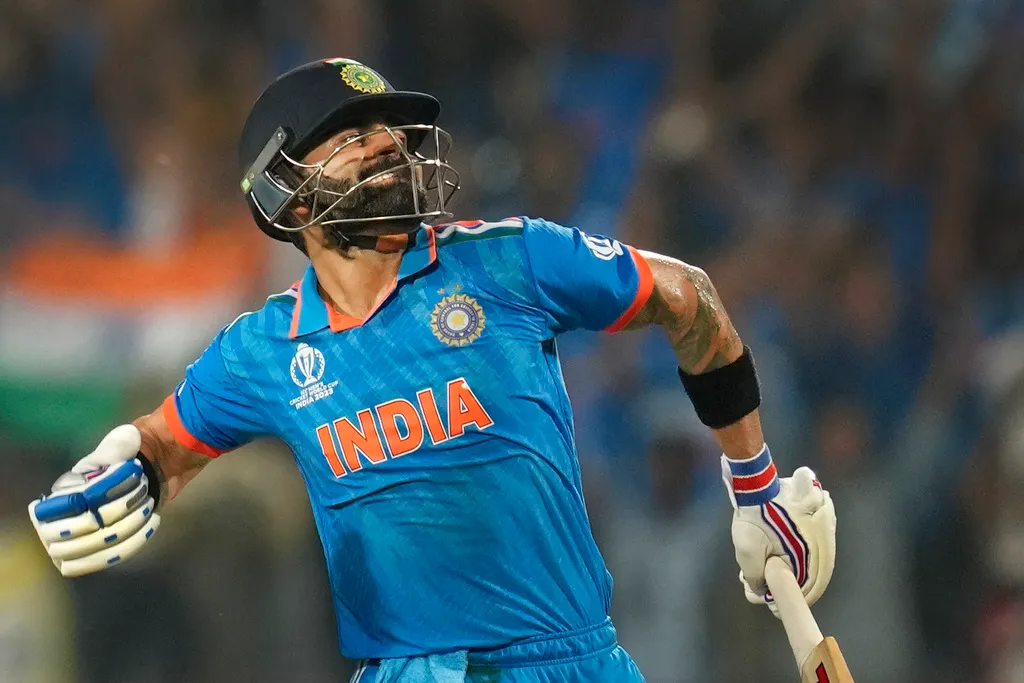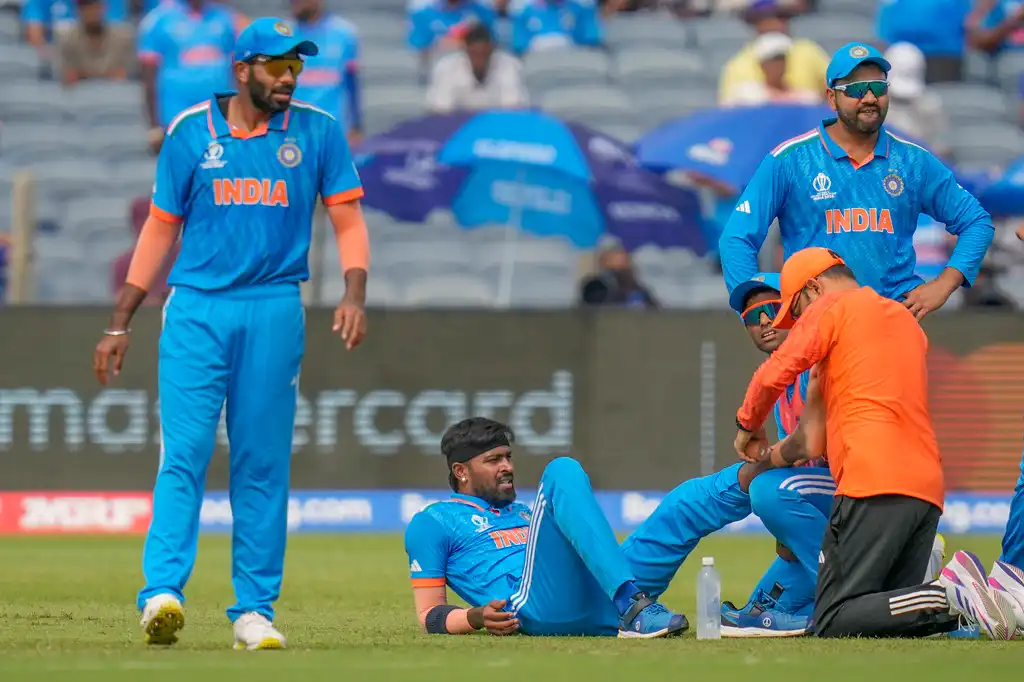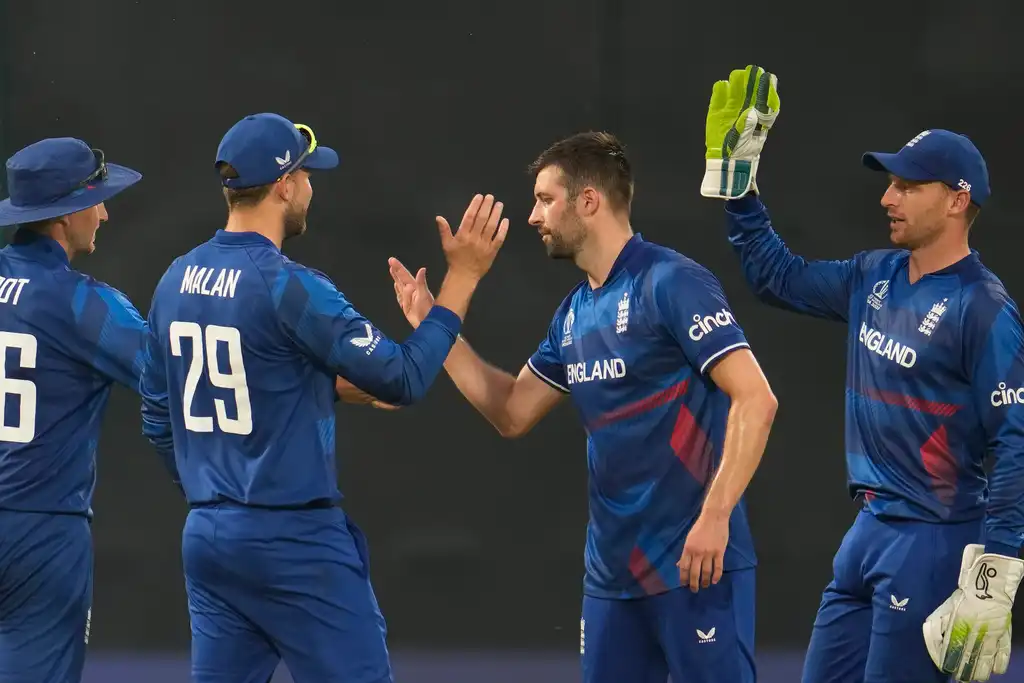 Kohli got to his 48th ODI century in Pune (AP Photo)
Kohli got to his 48th ODI century in Pune (AP Photo)
Richard Kettleborough has faced heavy criticism from certain corners for his infamous non-wide call with Virat Kohli batting not out on 97 and aiming for a hundred with India requiring two more runs to win against Bangladesh in the ICC World Cup 2023 on Thursday (October 19).
However, the experienced umpire's decision seems vindicated by the new laws governing the wide calls by standing officials. Kettleborough deemed the ball going down the leg-side from left-arm spinner Nasum Ahmed as a fair delivery when everyone on the outside adjudged the delivery a wide.
Since there were two more runs required, a wide given at that point would've meant Kohli could not have added more than a single run towards his individual kitty even if he smashed a winning maximum. But the non-wide call kept the Indian score to 255/3 and allowed Kohli to seal his 48th international century with a six over deep mid-wicket region.
The decision from Kettleborough polarised opinions as Indian fans enjoyed a decision that paved way for the hundred from their favourite star but cricket lovers on the outside questioned the umpire, asking whether the former India skipper enjoyed unfair luck.
Kettleborough's non-wide call vindicated by MCC law
As it panned out, Kohli was indeed lucky. But not because Kettleborough had given a decision in his favour. The batter was fortunate since he moved a fraction outside the leg stump to initially try and tap the ball for a single to the on-side. Or else, the 34-year-old wouldn't have had the decision going his way.
Kettleborough has been crucified by heaps of experts and journalists but the veteran official merely applied his expertise and based his judgement on Kohli's eventual position at the time the delivery from Nasum went past him down the leg-side. The well-versed umpire went by the amendment in the MCC laws governing the body call.
If the previous law ascertaining wide calls had been in place, only Kohli's initial stance and position at the time when Nasum started his run-up would've counted and his delivery down the leg-side would've been adjudged a wide irrespective of where the batter ended up standing.
Before the change to the law, clause 22.1.1 in the MCC Laws of Cricket, which talked about Judging a Wide, stated:
"If the bowler bowls a ball, not being a No ball, the umpire shall adjudge it a Wide if, according to the definition in 22.1.2, the ball passes wide of where the striker is standing and which also would have passed wide of the striker standing in a normal guard position."
An amendment was made to this law in March 2022 and put into effect from October 1st last year after the MCC adjusted Clause 22.1 keeping in mind how modern-day batters tend to shuffle across the crease and play adventurous strokes all around the park, making it unfair on the bowler for the wide to be based on the batter's initial point of standing.
"In the modern game, batters are, more than ever, moving laterally around the crease before the ball is bowled," an MCC statement read at the time of amendment. "It was felt unfair that a delivery might be called ‘Wide’ if it passes where the batter had stood as the bowler entered his/her delivery stride."
"Therefore, Law 22.1 has been amended so that a Wide will apply to where the batter is standing, where the striker has stood at any point since the bowler began their run up, and which would also have passed wide of the striker in a normal batting position."




